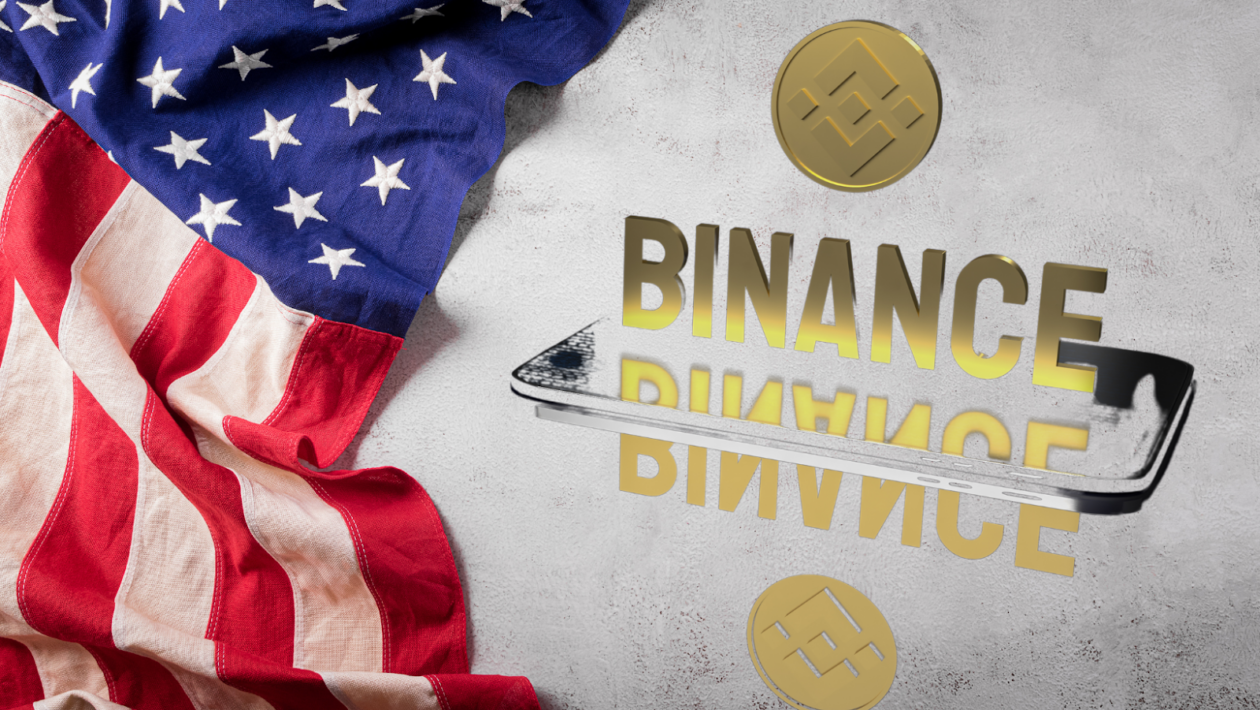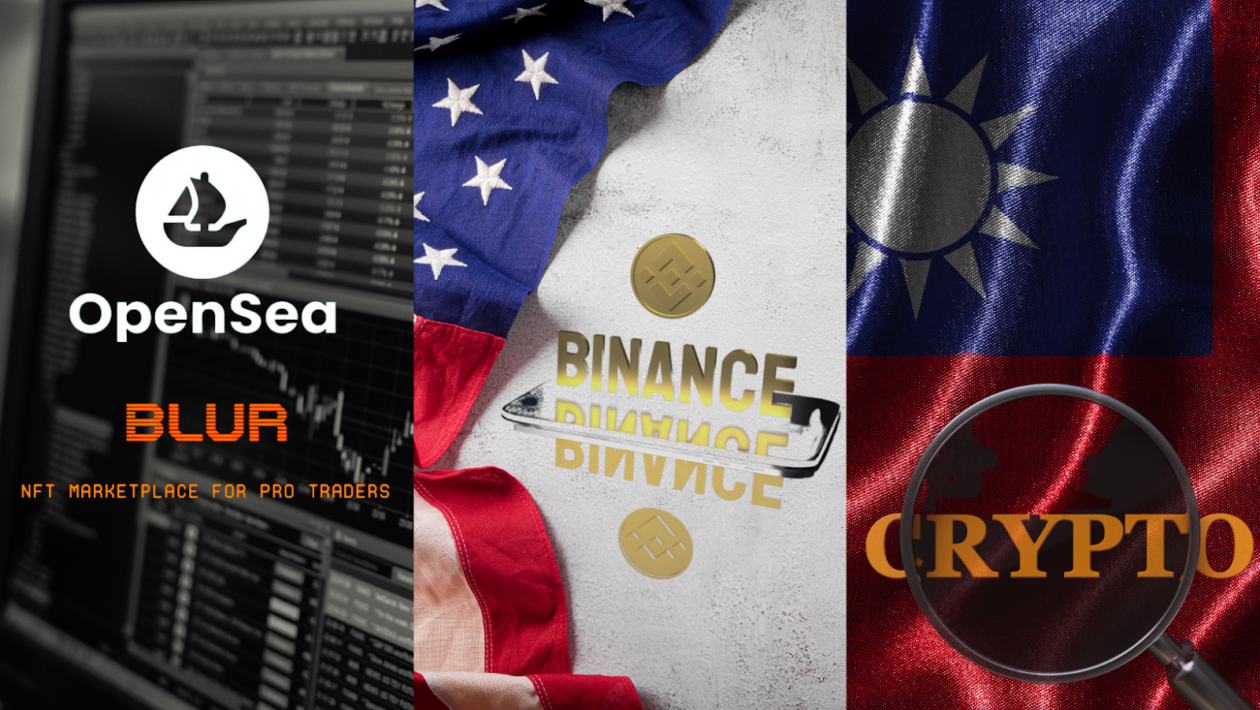In this issue
- Blur: Moving fast
- Binance: Bye-bye, America?
- Taiwan: Own it? Declare it.
From the editor’s desk
Dear Reader,
Fortunes are made and lost in crypto — and the digital asset industry more broadly — at a rate and frequency perhaps unparalleled in any other sector. Look no further than the tumultuous events that have taken place over the past 10 months.
The dramatic rise of some projects and the fall of others may appear to be a baked-in feature of the industry. Certainly, developments such as the recent meteoric ascent of Blur.io to the top of the non-fungible token (NFT) trading platform league seem to confirm the potency of such dynamics in the sector.
Momentum on the flipside hardly needs any mention — the three letters “F-T-X” speak for themselves.
Yet despite the runaway successes and ruinous collapses the industry has seen in recent times — and, in fact, since its very beginnings — the technology that underpins the digital asset ecosystem continues to evolve in its utility and sophistication, and should remain the focus of attention among those who are serious about the sector’s development.
From this perspective, Blur.io’s rise may be seen as a flash in the pan rather than an industry-changing success. Indeed, factors other than the quality of its business model have been identified as having played a role in its performance.
The NFT market has attracted more scorn than other segments of the digital asset industry over the value — or otherwise — of the products in which it trades. But does that undermine the argument that NFTs have potential uses and applications that will prove more enduring than cigarette-smoking apes? Hardly.
The wobbles that cryptocurrency exchange giant Binance has been experiencing, likewise, do not deal a coup de grace to the case for crypto.
So when news breaks of a major moment in the digital asset space, it’s prudent to step back, take a breath, and look at what lies beneath the headlines. That’s what we seek to do here at Forkast, as noisy as the industry can be in these jittery times.
The dazzling success stories and dismal failures will continue, but the technology that underpins all of them will only continue to improve, and that’s the most compelling and impactful story of them all.
Until the next time,
Angie Lau,
Founder and Editor-in-Chief
Forkast
1. Enhancing performance

By the numbers: Blur — over 5,000% increase in Google search volume.
OpenSea, the world’s biggest non-fungible token (NFT) marketplace by trading volume, has announced the launch of zero-fee trading for a limited time after competitor Blur.io surpassed it in 30-day trading volume.
- Zero-fee NFT marketplace Blur.io has seen trading volume of more than US$894 million in the past 30 days, surpassing OpenSea’s US$486 million, according to DappRadar data.
- Yohann Calpu, chief marketing officer at blockchain data analytics firm CryptoSlam, told Forkast that the surge had been fueled mainly by the Valentine’s Day airdrop of Blur tokens last week. CryptoSlam and Forkast are both owned by parent company Forkast Labs.
- “Many traders who used the blur.io marketplace — which has taken significant market share from OpenSea’s NFT trading volume — received an airdrop of Blur tokens, which many sold to buy their favorite NFT projects,” Calpu said.
- Following the liquidity drain, OpenSea announced last Friday that it would move to “a different fee structure that reflects the needs of today’s ecosystem” by introducing zero-fee NFT trading, optional creator earnings at a minimum of 0.5% for all collections without on-chain enforcement, and updating its operator filter to allow NFT sales using marketplaces with similar policies.
- CryptoSlam also said that currently, “~80% of total ecosystem volume does not pay full creator earnings, and the majority of volume (even accounting for inorganic activity) has moved to a zero-fee environment,” adding: “This requires a change.”
- Weekly NFT sales volume was up 210% to US$757.7 million, with NFT buyers up 42% to 417,086 according to CryptoSlam.
- Ethereum-native NFT collection Otherdeed was leading in weekly sales, up 368% to US$69.8 million, followed by the Mutant Ape Yacht Club, up 469% with a weekly sales volume of US$63.5 million.
Forkast.Insights | What does it mean?
Blur’s vertiginous ascent in the NFT world has taken many by surprise. Since its launch just four months ago, its trading volume has eclipsed that of OpenSea, which was launched in 2017 and had become the world’s biggest NFT marketplace. Although Blur’s outsized success has been attributed to its aggressive zero-fee policy and its recent token release, there is evidence to suggest that these might not be the only factors fueling its sudden growth.
Examining the biggest recipients of Blur’s native token reveals some unusual activity. The biggest wallet, which was opened relatively recently, had been buying and selling NFTs on Blur at a rapid pace.
The wallet had essentially bought and sold its own NFTs to itself, and it resembles the second- and third-largest wallets, which appeared to be engaged in the same practice.
Collectively, the three wallets had received more than US$5 million of tokens at the top of the market. This appeared to be a theme leading up to the token’s launch. Most of the tokens were then sold, leading to an 87% drop in their value.
What transpired is that wash trading had proliferated on the Blur network. People had bought into the hype at the top of the market, and fingers have been pointed at the Blur team for not doing more to combat bot trading.
Wash trading has become endemic in the NFT marketplace. More than half of 2022’s NFT trading volumes were the result of wash trading, as traders try to boost profits by creating the illusion of heightened value. Wash trading is illegal in the traditional finance world, which views it as a form of market manipulation, but it’s a gray area in the unregulated Wild West of NFTs. Blur, like every other NFT marketplace, appears to suffer from the same scourge, with little being done to address it.
2. Bye-bye, Binance?

By the numbers: Binance — over 5,000% increase in Google search volume.
Binance, the world’s largest crypto exchange, is reviewing its projects in the U.S. amid growing regulatory uncertainty in the country after Paxos had to stop minting the U.S. dollar-pegged Binance USD (BUSD) stablecoin.
- Paxos was ordered on Feb. 13 by the New York State Department of Financial Services to stop issuing BUSD, due to several “unresolved issues” related to its relationship with Binance, according to a consumer alert issued by the department.
- Paxos announced on the same day that it would end its relationship with Binance for BUSD and stop issuing new BUSD tokens from Feb. 21, but said it would continue to manage BUSD and back the stablecoin at a 1:1 ratio with U.S. dollar-denominated reserves.
- Binance Chief Executive Changpeng Zhao, also known as “CZ,” tweeted: “Given the ongoing regulatory uncertainty in certain markets, we [Binance] will be reviewing other projects in those jurisdictions.”
- According to a Bloomberg report that cited unnamed sources, Binance is considering cutting its ties with U.S. intermediaries and service providers and de-listing any tokens based on U.S. projects.
- Zhao tweeted that Binance had pulled back on some potential investments and bids for bankrupt companies in the U.S., but said the notion that Binance was considering de-listing all U.S.-based cryptocurrencies was “false.”
- The market capitalization of BUSD, the world’s third-largest stablecoin, has fallen from US$16.15 billion on Feb. 13 to US$12.4 billion, a decrease of more than 23%, according to CoinMarketCap. Tether, the world’s largest stablecoin, has seen a gain of more than US$2 billion in its market cap over the same period.
- Paxos also faces potential lawsuits brought by the U.S. Securities and Exchange Commission (SEC), which has alleged that BUSD is an unregistered security whose issuance by Paxos has violated federal securities laws. Paxos responded in a statement that it “categorically disagrees” with the SEC and that it is prepared to “vigorously litigate if necessary.”
- Binance is the target of multiple investigations by U.S. regulators, and it expects to pay financial penalties to settle the probes of its business and past crypto offerings.
- Binance’s troubles are part of a series of crackdowns on the crypto industry in the U.S., and the crypto community is calling on Congress to create a new legal framework to govern the blockchain industry instead of having the SEC regulate it by enforcement using laws originally intended for traditional finance.
Forkast.Insights | What does it mean?
Binance has discussed options on whether it would pull out of the U.S., but that has been overshadowed by recent reports that the exchange’s U.S. arm had been passing money to a trading company owned by Zhao, its CEO.
It has been alleged that US$400 million was moved between Binance.US and Zhao’s trading firm. Executives at Binance.US had raised concerns over the movement of money, but those concerns appear to have generated nothing in the way of a response.
Catherine Coley, the chief executive of Binance.US at the time, wrote to another company executive in late 2020 asking for an explanation for the transfers, calling them “unexpected” and saying that “no one mentioned them.” She received no direct reply.
Then there are issues such as Binance moderators’ alleged deletions of complaints from its Reddit channel, multiple lawsuits against the exchange that are currently under way, and its labyrinthine corporate structure.
Binance is seeing record amounts of money leaving its exchange, possibly hinting at distress. If that continues, it won’t really matter where Binance chooses to go next.
3. Show and tell

Taiwan’s Ministry of Justice said last week that it may add cryptocurrencies to the list of asset types that public servants must declare.
- Taiwan’s anti-corruption watchdog said in a statement that it is pondering regulations that would require government officials and employees to report their crypto asset holdings under local property declaration laws.
- Under the law, public servants in Taiwan must declare assets worth more than NT$1 million (US$32,750), including cash, deposits, securities and artworks. The intentional concealment of assets can be punished by fines of up to NT$4 million (US$134,102).
- Crypto assets may become part of a list of declarable assets as soon as November, when public servants report their annual holdings, an official at the Ministry of Justice told Forkast.
- In July 2021, Taiwan introduced anti-money laundering rules for cryptocurrency service providers, but the industry has remained largely unregulated on the self-governed island.
Forkast.Insights | What does it mean?
Taiwan has so far taken a relatively permissive approach to the crypto industry, with anti-money laundering rules being the most that regulators have applied to rein in risk. Now, with the anti-corruption watchdog considering a change that would compel public servants to report their crypto holdings, Taiwan may be taking a step closer to developing more crypto regulations.
Unlike government agencies in the U.S., such as the Securities and Exchange Commission and the Commodity Futures Trading Commission, which have positioned themselves as the default regulators of the asset class, authorities in Taiwan have seemed reluctant to take on a responsibility that could amount to opening a Pandora’s box of problems.
Given the anonymous/pseudonymous nature of crypto assets, it can be difficult to track crypto holdings to named individuals. But Tsai Ching-hsiang, Taiwan’s minister of justice, told local media that the point is to have public servants honestly report all their assets, which could include crypto. Tsai added that individuals who fail to disclose would be fined.
Talk and threats aside, authorities still need to figure out how exactly they would track individuals’ crypto holdings, ferret out those keeping secrets, and carry out enforcement. The Ministry of Justice told local media that it had assigned a team of five investigators to train with blockchain analysis firm Chainalysis in data tracking, but how the agency would put that to practice remains to be seen.




